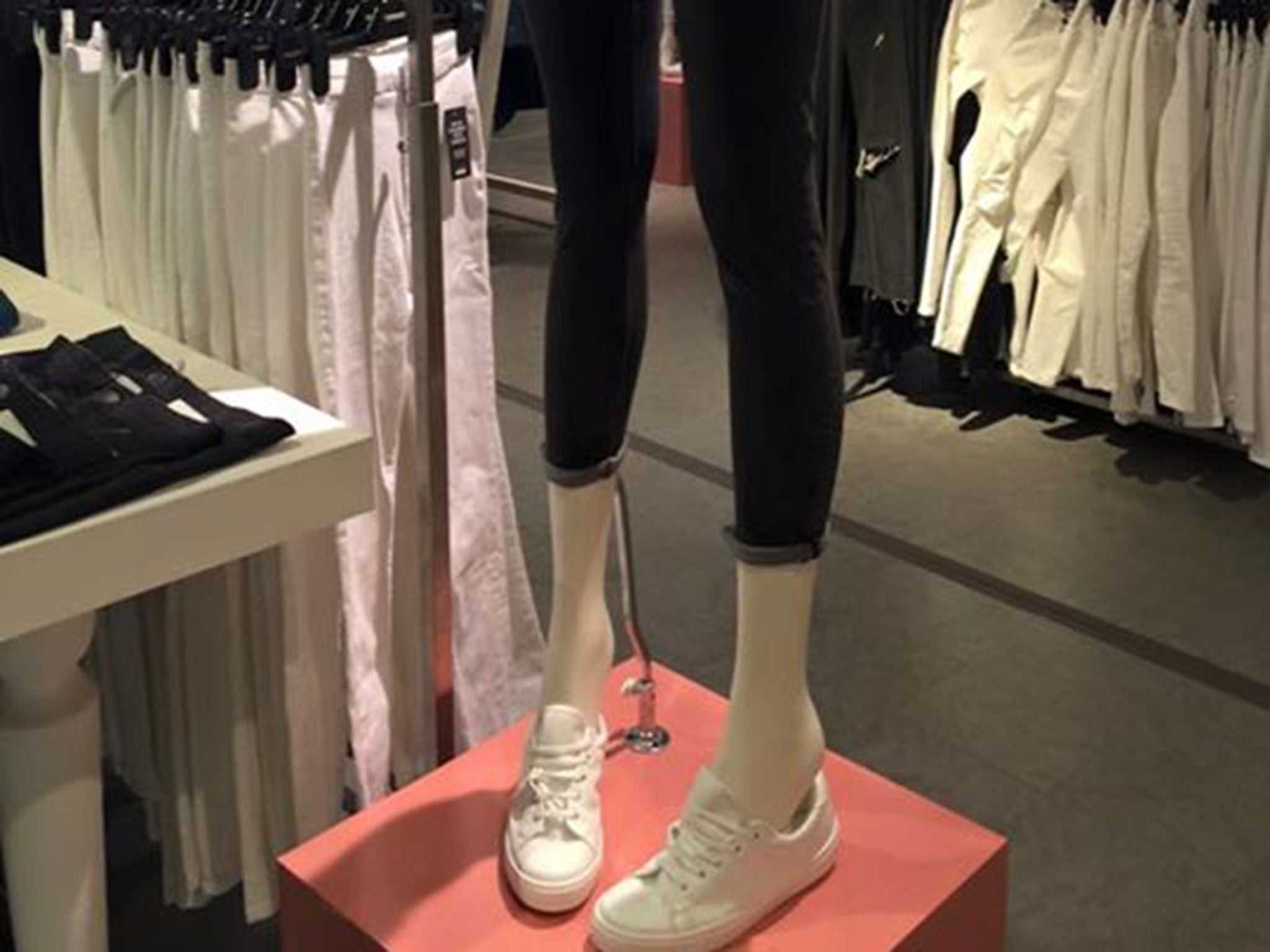The removal of Topshop's mannequins shows that fashion must move from aspirational to average
Before the age of social media, people like Laura Berry had very little power. But now the customer is firmly in charge, and beauty standards will be forced to change

Topshop’s been under the spotlight this week for using mannequins which are, according to one woman, “ridiculously shaped” and responsible for fuelling women’s body insecurities. That woman was angry customer Laura Berry, whose Facebook post about the tiny mannequins attracted thousands of ‘likes’, messages and comments – enough to grab the attention of Topshop bosses, and lead to the mannequins’ removal. It turns out more women care about plastic replica people that you could ever have imagined.
It’s hardly surprising that Topshop were modelling their clothes on super-stretched size sixes. Fashion outlets do tend to favour skinny bodies over larger ones, while the (human) models they use tend to err on the small side as well. Meanwhile, the “plus-size” models who turn up in this mix from time to time still look fairly slender to us mere mortals. But is it really fashion’s responsibility to reflect the average woman in its models and mannequins, so long as the clothes come in a variety of sizes?
Fashion has an undeniably aspirational element, and that’s part of the fun. We cannot force high street stores to change every aspect of their décor to reflect the face of the workaday woman: to do so would be to overlook that element, that desire to redefine yourself and to be transformed into a better, more exciting version of “you”. Size six models and their mannequin counterparts are a part of that desire to create a perfect, dreamlike image, which is unobtainable by most women exactly because it is designed to be something otherworldly. Fashion magazines, chock-a-block with catwalk photography featuring women in unwearable outfits topped off with thirteen-inch heels, are selling an idea and a concept to their audience as much as they are selling a clothes line.
But then we step outside the fashion world and back into the real one, and the irritating fact remains that women need clothes to wear. As lovely as Topshop’s size six utopia almost certainly is, you can’t access that world if you can’t physically drag a tiny piece of sand-blasted denim over your stubborn thighs. It is, after all, a mainstream clothing outlet. Moreover, it’s a mainstream clothing outlet with chains on almost every high street and adverts on almost every teen girl’s screen: Topshop has a tangible effect on its target market, who are women and girls aged 15-30.
In recent times, a lot of justified anger has been directed at stores and brands which insist on reducing their standards of beauty to one size or one body type. This can be seen in the support for model Tess Holliday’s “Eff your Beauty Standards” campaign, as well as the widespread and often humorous backlash against Protein World’s “Beach Body Ready” advertising campaign. What’s striking about this is how much power individuals can have in shouting back: social media has upset the balance, and stores no longer merely dictate what’s hot and what’s not to an awestruck populace.
Customers like Laura Berry know how much brands like Topshop owe them, and they’re willing to exploit that. After all, they can always buy their jeans in a different store if their demands for a more diverse representation aren’t met – perhaps a store that doesn’t insist on making them feel as though they are simply oversized intruders.
Join our commenting forum
Join thought-provoking conversations, follow other Independent readers and see their replies
Comments